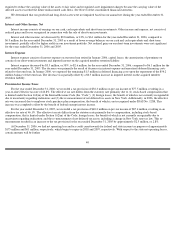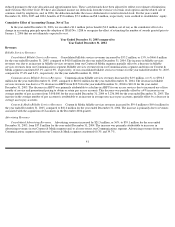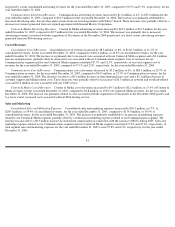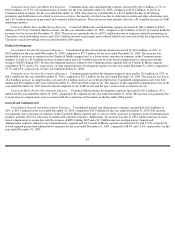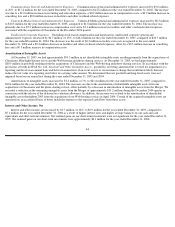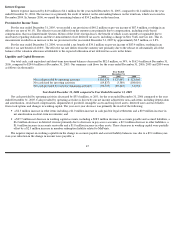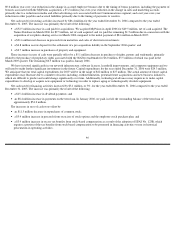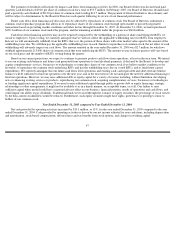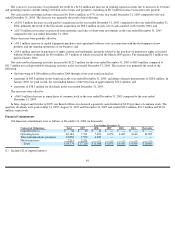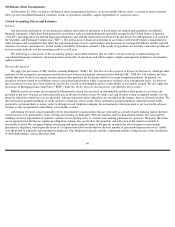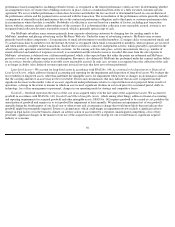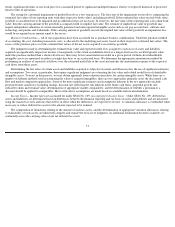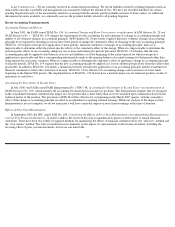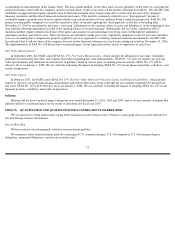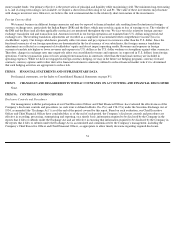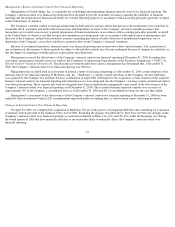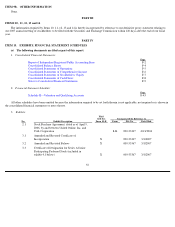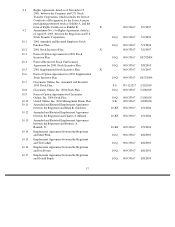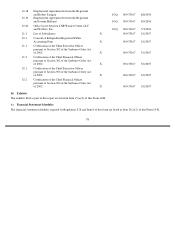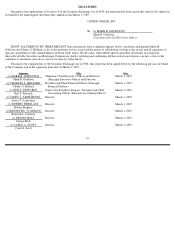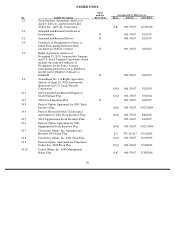Classmates.com 2006 Annual Report Download - page 51
Download and view the complete annual report
Please find page 51 of the 2006 Classmates.com annual report below. You can navigate through the pages in the report by either clicking on the pages listed below, or by using the keyword search tool below to find specific information within the annual report.
performance-based arrangements, including referral revenues, is recognized as the related performance criteria are met. In determining whether
an arrangement exists, we ensure that a binding contract is in place, such as a standard insertion order or a fully executed customer-specific
agreement. We assess whether performance criteria have been met and whether the fees are fixed or determinable based on a reconciliation of
the performance criteria and the payment terms associated with the transaction. The reconciliation of the performance criteria generally includes
a comparison of internally tracked performance data to the contractual performance obligation and to third-party or customer performance data
in circumstances where that data is available. Probability of collection is assessed based on a number of factors, including past transaction
history with the customer and the creditworthiness of the customer. If it is determined that collection is not reasonably assured, revenue is not
recognized until collection becomes reasonably assured, which is generally upon receipt of cash.
Our MyPoints subsidiary earns revenue primarily from corporate advertising customers by charging fees for sending emails to the
MyPoints’ members and placing advertising on the MyPoints Web site. Under the terms of advertising contracts, MyPoints earns revenue
primarily based on three components: (1) transmission of email advertisements to enrolled members, (2) unique clicks on transmitted emails and
(3) actual transactions by members over the Internet. Revenue is recognized when email is transmitted to members, when responses are received
and when members complete online transactions. Each of these activities is a discrete, independent activity, which generally is specified in the
advertising sales agreement entered into with the customer. As the earning activities take place, activity measurement data (e.g., number of
emails delivered and number of responses received) is accumulated and the related revenue is recorded. Revenue from the sale of points to
MyPoints’ advertisers is deferred over a fifteen-month period, which is the expected time that either the points are redeemed and MyPoints
provides a reward, or the points expire prior to redemption. Revenue is also deferred if MyPoints has performed under the contract and has billed
for its services, but the collection of the receivable is not reasonably assured. In such case, revenue is recognized once the collection of the cash
is no longer in doubt. Also, deferred revenue represents invoiced services that have not yet been performed.
Long-Lived Assets— We account for long-lived assets in accordance with SFAS No. 144, Accounting for the Impairment or Disposal of
Long
-Lived Assets , which addresses financial accounting and reporting for the impairment and disposition of long-lived assets. We evaluate the
recoverability of long-lived assets, other than indefinite life intangible assets, for impairment when events or changes in circumstances indicate
that the carrying amount of an asset may not be recoverable. Events and circumstances that may indicate that an asset is impaired include
significant decreases in the market value of an asset, significant underperformance relative to expected historical or projected future results of
operations, a change in the extent or manner in which an asset is used, significant declines in our stock price for a sustained period, shifts in
technology, loss of key management or personnel, changes in our operating model or strategy and competitive forces.
Goodwill— Goodwill represents the excess of the cost of an acquired entity over the fair value of the acquired net assets. We account for
goodwill in accordance with SFAS No. 142, Goodwill and Other Intangible Assets , which among other things, addresses financial accounting
and reporting requirements for acquired goodwill and other intangible assets. SFAS No. 142 requires goodwill to be carried at cost, prohibits the
amortization of goodwill and requires us to test goodwill for impairment at least annually. We perform an impairment test of our goodwill
annually during the fourth quarter of our fiscal year or when events and circumstances change that would more likely than not indicate that
goodwill might be permanently impaired. Events or circumstances which could trigger an impairment review include a significant adverse
change in legal factors or in the business climate, an adverse action or assessment by a regulator, unanticipated competition, a loss of key
personnel, significant changes in the manner of our use of the acquired assets or the strategy for our overall business, significant negative
industry or economic
50


